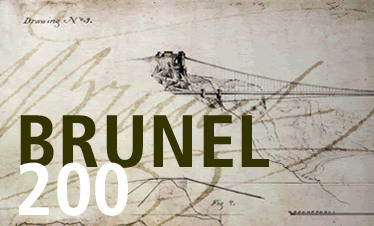
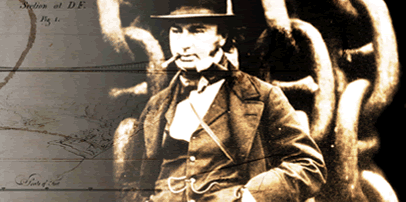
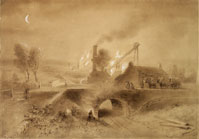
Northumberland Colliery
(Elton Collection: Ironbridge Gorge
Museum Trust)
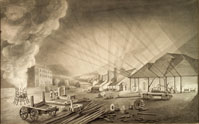
Rolling Mills
(Elton Collection: Ironbridge Gorge
Museum Trust)
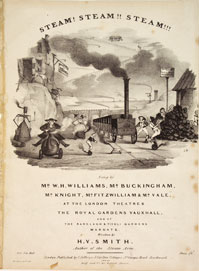
Steam! Steam!! Steam!!! song sheet
(Elton Collection: Ironbridge Gorge
Museum Trust)






In a steam engine, hot steam, usually supplied by some form of boiler, expands under pressure producing heat energy that can be converted into action. The improvements made by James Watt (1736-1819) to the efficiency of the Newcomen steam engine through the introduction of a condenser chamber (patented in 1768) demonstrated the advantage of steam power over water or wind. Steam driven winding engines could increase the rate at which coal was mined which thereby increased the capacity for producing more steam energy. By translating this energy into a mechanical force through the use of pistons it was possible to increase production of the iron needed to build steam-powered engines which in turn raised production levels in a variety of other manufacturing processes, notably textiles.
The high set-up costs of building factories and the machinery to run them were offset by the more uniform quality of the goods produced. As production increased in volume, costs fell. People were drawn out of the old rural economy, which had suffered from the demise of many cottage industries and the agricultural crash, and into the new industrial one. By the mid-nineteenth century, for the first time more English people lived in a city or town than in the country.
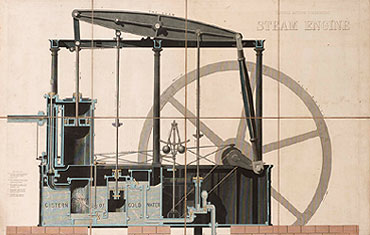
Victorian educational aid showing steam engine (Private collection)
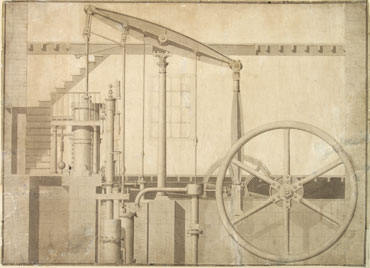
Engineering drawing of double-acting Watt-type stationary steam engine, by Joseph Clement (Elton Collection: Ironbridge Gorge Museum Trust)
